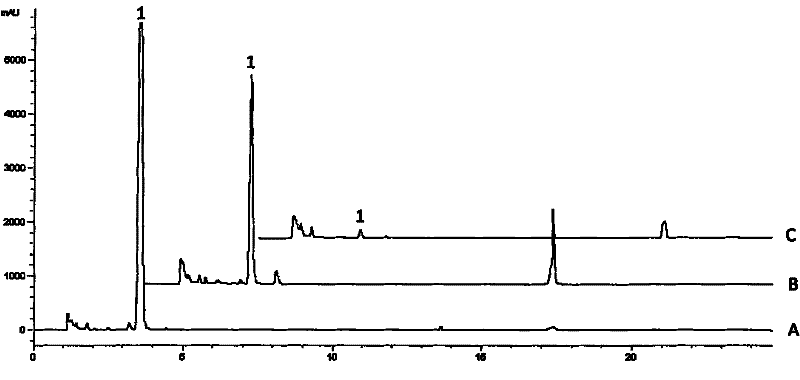Alternaria radicina bacterial strain for producing alpha-L-rhamnoside enzyme and cultivating method as well as application thereof
A technology of rhamnosidase and Alternaria, which is applied to Alternaria strains and its cultivation method and its application in the hydrolysis of naringin, and can solve the problems of limited species
- Summary
- Abstract
- Description
- Claims
- Application Information
AI Technical Summary
Problems solved by technology
Method used
Image
Examples
Embodiment Construction
[0006] Alternaria sp.L1 strain producing α-L-rhamnosidase, the strain was preserved in the General Microbiology Center of China Committee for Microbial Culture Collection on March 25, 2010, and the preservation number is CGMCC No.3688 .
[0007] Alternaria L1 strain grows rapidly on the potato medium, and the colony spreads in 2 to 3 days, producing a large amount of mycelium. The colony is white at first, and turns greenish brown in about 3 days, and gradually turns brown to dark with the extension of culture time. Brown, the hyphae in the base produce a water-soluble brown pigment. The conidiophores are born on the side and top of the aerial hyphae, and the separation is constricted. The conidia are solitary or in chains on the conidiophores, which are inverted pear-shaped or ovoid, with horizontal, vertical, Oblique septum, separated in a brick lattice, with verrucous protrusions on the surface, brown or dark brown in color. The accession number of the 18S rDNA of this st...
PUM
 Login to View More
Login to View More Abstract
Description
Claims
Application Information
 Login to View More
Login to View More - R&D
- Intellectual Property
- Life Sciences
- Materials
- Tech Scout
- Unparalleled Data Quality
- Higher Quality Content
- 60% Fewer Hallucinations
Browse by: Latest US Patents, China's latest patents, Technical Efficacy Thesaurus, Application Domain, Technology Topic, Popular Technical Reports.
© 2025 PatSnap. All rights reserved.Legal|Privacy policy|Modern Slavery Act Transparency Statement|Sitemap|About US| Contact US: help@patsnap.com

